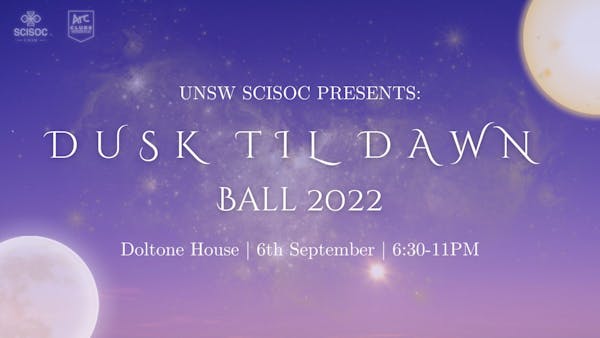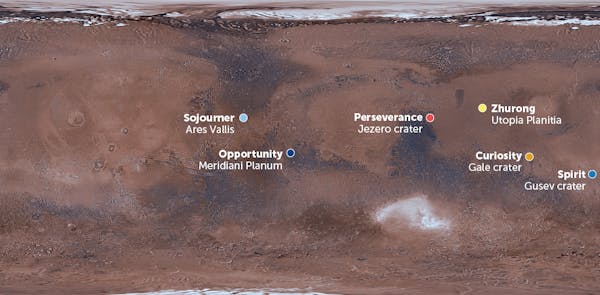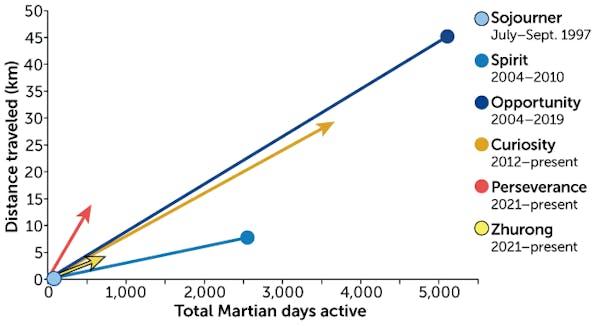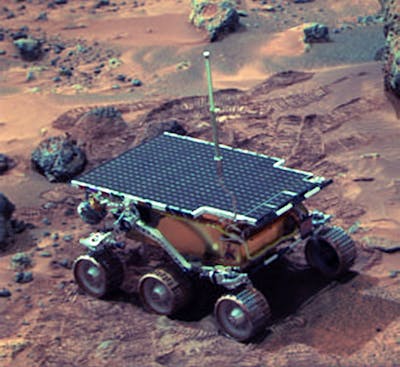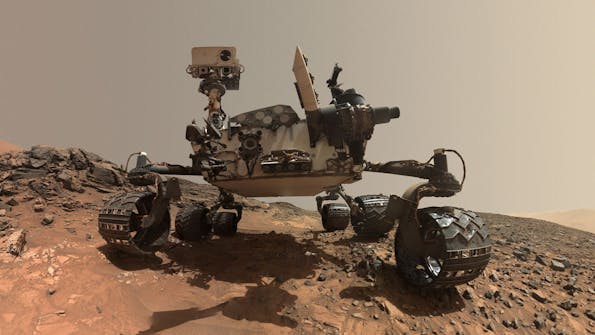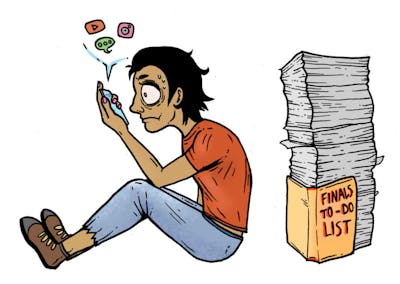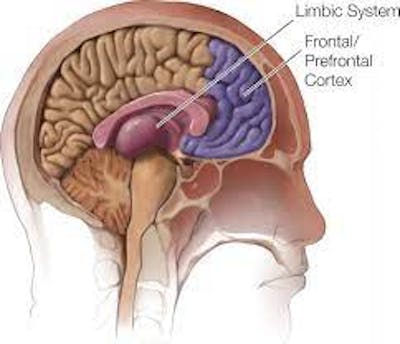Welcome back to SCISOC’s fortnightly newsletter, PRISM! This fortnight's newsletter presents the exciting upcoming event of SCISOC Ball 2022. For Science News, we explore the revolution of Mars Rovers. Lastly, our Fun Corner examines our biggest enemy when studying: procrastination. |
|
|
UNSW SCISOC PRESENTS: DUSK TIL DAWN BALL 2022 Ready to unwind after exams and forget all the tragedies? Come to UNSW Science Society’s Annual Ball and be ready to dance from dusk till dawn in your favourite suits and dresses! There will be cocktails, music as well as an award-winning 3-course meal with UNLIMITED drinks to prepare you for the best night of your life. Even more, there will be a popcorn bar to satisfy all your snacking cravings throughout the night. Relive the best parts of your life with your friends through the high-quality photos taken by professional photographers. ☀️Location: Doltone House, Darling Island 🌑Date: Tuesday, 6th September 2022 ☀️Time: 6:30pm - 11:00pm 🌑Dress code: Formal (Dusk Til’ Dawn) |
|
|
GradReady InterviewReady Courses Last chance to enrol for GradReady’s InterviewReady Courses! Enrolments close in 3 days on Thursday 8 September at 1 PM AEST! Secure a spot in their InterviewReady MMI Comprehensive Courses and be eligible for a full refund if you don’t receive an interview offer! Their InterviewReady courses are updated every year and feature a detailed breakdown of various important scenarios, followed by a full Mock MMI! Final spots remaining - Enrol Today HERE and take advantage of their No Interview Full Refund Offer! |
|
|
The evolution of Mars Rovers Twenty-five years ago, on the morning of July 4th, 1997, a little six-wheeled rover name Sojourner landed on the Red Planet becoming the first in a string of rovers built and operated by NASA to explore Mars. following that, four more NASA rovers, each more capable and complex than the last, surveyed Mars. Marking its 10th year of exploration, a rover named Curiosity was sent up there. Another name perseverance is currently collecting rocks that future robots are supposed to retrieve and bring back to Earth. Not only is America sending rovers to Mars, last year China also sent its own rover, Zhurong. |
Currently, only three of the machines are exploring Mars. |
|
|
Character profiles Sojourner: the little microwave that could Size: microwave oven Fun facts: The sojourner spent almost 3 months exploring the landscape as it was quite slow. Mission controllers had to continuously communicate with it, telling it where to go and assessing whether it arrived safely. Many mistakes were made, such as accidentally shutting the rover down. However, they quickly recovered from those mistakes and continued to move forward. |
|
|
Although sojourner was a test mission, it managed to analyse the chemical makeup of 15 martian rocks and also tested the friction of Martian soil. Although Sojourner survived beyond its planned one-week lifetime, it ultimately grew too cold to operate after 11 weeks on September 27, 1997. |
| |
|
Spirit and opportunity : twin explorers Size: golf cart Fun facts: Spirit spotted minerals possibly left by an ancient hot spring Opportunity found the first definitive evidence of ancient water on Mars Spirit perished when it got stuck in a sand pit Opportunity died in a dust storm, which cut off solar power
In 1998 and 1999, NASA hurled a pair of spacecraft at mars, one at orbit and another near one of the poles, but unfortunately both failed. Disappointed, NASA decided to build two rovers, one as backup, for its next attempt. Thus were born the twins, Spirit and Opportunity. They were a major advancement from Sojourner, being the size of golf carts. Each had a robotic arm that enabled the machines to do so much more than ever before. They also had improved cameras, three spectrometers and a tool that could grind into rocks to reveal the texture beneath the surface. However, not all was smooth sailing. The twins were launched several weeks apart in 2003, with Spirit arriving first. On its 18th martian day, it froze up and began sending error messages. It took mission controllers a few days to fix the overloaded flash-memory system, all while Opportunity was being sent to Mars. ultimately, all was fixed and opportunity landed safely on the opposite side of the planet. Both lasted years beyond their expected three-month lifetimes and did so much more science than anticipated. Even though the spirit broke one of its wheels and had to drive backwards, dragging its broken wheel behind it, the rover found dust rocks and hills near its landing site, Gusev crater. Spirit found rocks that appeared to have been altered by water long ago and soon after spotted a pair of iron-rich meteorites. Ultimately, it perished in 2010, stuck in a sand pit. Mission controllers tried to extract it but salts had precipitated around the sand grains, thus making it particularly slippery. Opportunity, on the other hand, had explored constantly, refusing to die. Right where it landed, opportunity spotted the first definitive evidence of past liquid on mars. It continued to find evidence of liquid water at different times in the martian past. After driving for years, it reached a crater that held rocks that were hundred of millions of years older than any others previously studied on mars. It contained evidence of different types of ancient water chemistry. It finally died in 2019 after an intense dust storm that obscured the sun, thus cutting off solar power and resulting in the rover running out of battery.
|
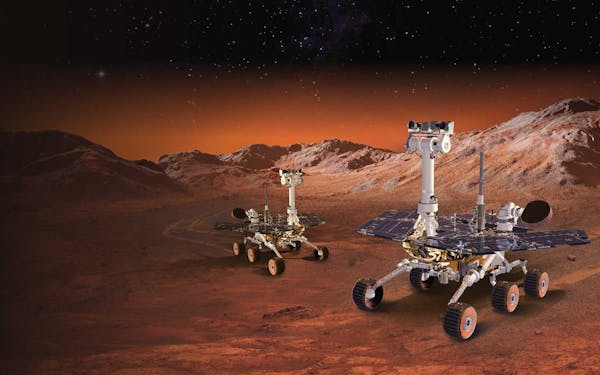 |
|
|
Curiosity : the SUV of rovers Size : SUV Fun facts: needed a sky crane with rockets to hover above ground and slowly lower it to the surface Found evidence of an ancient lake, sniffed methane gas, and measured radiation levels In august 2012, the one-ton rover, curiosity, landed using a “sky crane” system to lower it to the ground. Unlike the first 3 rovers, curiosity runs on energy produced by the radioactive decay of plutonium. This allows the rover to travel further and faster and also powers a suite of science instruments, including 2 chemical laboratories. Curiosity explores mars by looking around with its cameras and zapping interesting rocks with lasers to identify which ones to look at. Once decided, the rover stretches its arm out and does a series of processes, one of which includes drilling into rocks. When it arrived on mars, it immediately spotted pebbles next to an ancient river. Then it discovered evidence of an ancient lake in a crater that created life-friendly conditions for many thousands of years. Throughout the years, this rover sniffed methane gas that wafted within a crater, measured radiation levels across the future, and observed dust devils, clouds and eclipses in the martian atmosphere and night sky. 
Curiosity is now 10 years into exploration and is still exploring, making new discoveries.
|
|
|
Perseverance : a rover and its sidekick Size: SUV Fun facts: Collecting rocks for a later recovery mission Travelled almost 5km in 30 martian days Helicopter ingenuity was expected to fly 5 times, but has made 29 trips so far
Perseverance is essentially a copy of curiosity built from its spare parts with one major modification; it has a system for drilling, collecting and storing slender cores of rocks. Its job is to collect samples of Martian rocks for future missions to bring back to Earth. Perseverance has been zooming around its landing site since February 2021. So far, it has collected 10 rock cores and has found igneous rock on the crater floor which had cooled from molten magma and not the sedimentary rocks scientists expected. Persevering sidekick, ingenuity, is the first helicopter on mars. At only half a meter tall, it has made 29 flights in its first 16 months. Future rovers are almost certainly going to have a little buddy like this. |
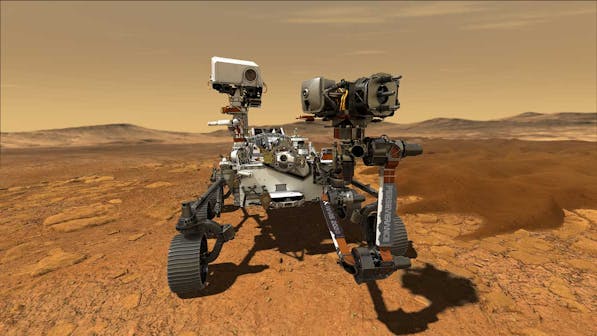 |
Zhurong : china’s debut Size: golf cart Fun facts: Dormant now during Martian winter, but is set to reawaken in December Found signs of recent water activity in a geologically young setting Found martian soil similar to some of Earth’s desert sands
In May 2021, China became the second nation to place a rover on Mars successfully. Its landing site lies near a geologic boundary that may have been an ancient shoreline. Compared with other locations, this landing site is billions of years younger. It also carries cameras, a laser spectrometer for studying rocks and ground-penetrating radar to probe underground soil structures. Zhurongs initial findings include soil similar to some desert sands on Earth and water that had been present perhaps as recently as 700 million years ago. In May, the rover was switched into the dormant mode for the martian winter and hopefully wakes up in December at the end of the season. |
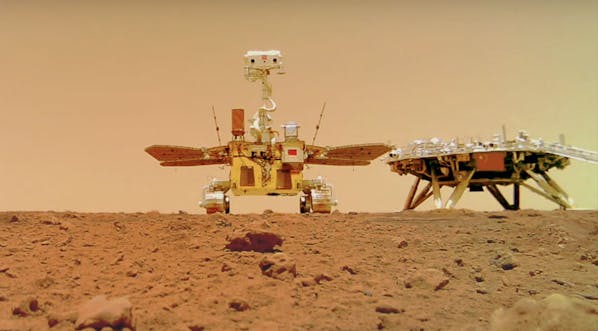 |
From Sojourner to Zhurong, the Mars rovers show what humankind can accomplish on another planet. “We’re little tiny human beings sending these things to another planet.” (Ashwin Vasavada, project scientist at NASA) |
|
|
Exam season was just around the corner and that means one thing and one thing only; studying. For most students, that is the only task that they need to do. They need to sit there with their notes and study. It sounds simple enough, right? You set aside a chunk of your time in the day for this task and all you need to do is well… complete it. Why then, do the majority of these students struggle to study? That’s where our biggest enemy comes to play. Procrastination. It’s like an addiction. You don’t know you’ve been sucked in until it’s too late. The assignment that is due in two months suddenly turns into the assignment that was due yesterday. Procrastination will probably be the closest thing to fast forwarding time. |
|
|
| What exactly is procrastination? Simply put, procrastination is the avoidance of work or necessary tasks by focusing on more satisfying activities. Most people break it down to lack of self motivation, lazy habits or incompetence but in reality, it is much deeper than that. Procrastination is a chemical. And today we are going to delve into the science behind it. |
|
|
Procrastination boils down to a battle between the limbic system and the prefrontal cortex. Excuse us for all that scientific jargon. The limbic system refers to a set of brain structures containing the pleasure center, while the prefrontal cortex is the planning and decision making that goes on inside our brain. For most people, the prefrontal cortex tends to be less developed and thus the limbic system wins out. Thus, this leads to procrastination. |
| |
|
This may surprise you but procrastination has a few different characters. Which one are you? Thrill seekers: These are the people who enjoy the rush from racing to meet deadlines. It’s that satisfying feeling of starting an assignment three hours before it’s due and finishing five minutes early. These people procrastinate to catalyse this experience and sometimes it works but for most, they sacrifice a huge chunk of their work quality just to finish on time. Avoiders: These are ones that procrastinate out of fear of being judged for both successful and unsuccessful work. They tend to forget why they are doing the task in the first place. Indecisive: The overthinkers. The backspace key is their favourite key on the keyboard. These are the procrastinators who put off tasks to avoid the blame for a sub-par end product. It’s usually the first sentence/question that crumbles them.
|
|
|
Many of you probably realise that procrastination is detrimental to our lives. Whenever you set aside the things that you need to do and turn to instant gratification, you are left with regret, guilt, and thoughts that you don’t deserve to be enjoying these things. Many people often turn to the fun, easy things to do, rather than the necessary time-consuming and challenging things. Thus, when procrastinators reflect on their lives, they tend to do so with a heavy heart, knowing they were unable to achieve their full potential not because they weren’t presented with the opportunity, but because they simply couldn’t start what they needed to do. |
|
|
There are two main types of procrastination: one that is contained by a deadline and one that isn’t. For example, consider an assignment compared to going to the gym. Because an assignment has a deadline, your procrastination will be contained, knowing that you have to hand it in at a certain time. You’ll eventually end up working on it because you have to, but you don’t ‘have to’ go to the gym. There’s no deadline associated with going to the gym, because it’s purely based on what you want and what you’re willing to do. Thus, your procrastination isn’t contained, and you’re free to do whatever you want. |
|
|
So, on a lighter note, what do you do about it? We all know procrastination isn’t something that’s easily fixed, and it’s something that sticks with us for pretty much our entire lifetime. For the tasks that have deadlines, first be aware of when the deadline is. Remove all distractions from around you; turn Do Not Disturb on, put your phone in a different room, or even just lock your phone away. Set your own deadlines, and be realistic by giving yourself leeway on your tasks. The hardest part is to take the first step, but once you do, productivity will be a routine, not a task. Now, what about the tasks where you don’t have a deadline? How do we motivate ourselves to do the hard things and achieve something? The answer: a wake-up call. |
|
|
Consider this grid of boxes, known as a ‘life calendar’. Each box represents a week, and this grid holds the same number of boxes as there are weeks in a ninety-year lifetime. Now, if you actually look at it, there aren’t that many boxes, considering we’ve already used quite a few of them. So, have a good long think about what you’re procrastinating on, because we all have something we need to work on. |
|
|
UNSW Science Society is proud to announce our continued partnership with GradReady through 2022. GradReady provides GAMSAT Preparation courses for anyone looking to pursue Medicine after they graduate.
This process starts earlier than you think, so if you’re studying medical science or just have that passion, check out what they have to offer! |
|
|
| |



